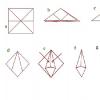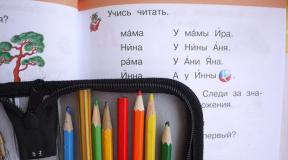Military equipment on Elbrus. Ministry of Defense: tests of military vehicles on Elbrus completed successfully. Extreme at all latitudes
Tests of military vehicles, which were carried out during the expedition when climbing up to 4 thousand meters to Elbrus, were successfully completed. Deputy Defense Minister of the Russian Federation General of the Army Dmitry Bulgakov told reporters on Friday.
According to him, the Ministry of Defense completed a special expedition to test modern and promising military vehicles in southern Russia, and on Friday the convoy of equipment and personnel returned to Bronnitsy.
Specialists of the Main Armored Directorate carried out definitive tests in conditions of increased dustiness and mountainous terrain. After returning, all the results of the expedition will be summarized, analyzed for making further decisions on certain samples. The most important result of the expedition is that the results showed the correctness of the chosen direction of development of military automotive equipment for use, including in the extreme conditions of the desert and highlands.
Bulgakov said.

He said that Typhoon-U, Typhoon-VDV, Typhoon-K, Asteys-70201 vehicles, Tornado-U off-road trucks, a number of Ural and KamAZ trucks were tested. and new cars of the UAZ family.

The Tornado-U car showed good results. In general, "Tornado" is a family of multipurpose vehicles of the future, it is a step forward and a step in the development of the military automotive industry. These will be not only trucks, but also for the installation of weapons, special equipment, that is, they will occupy the full niche of multi-purpose vehicles with a carrying capacity from 6 to 30 tons.
The deputy head of the military department told.
According to the Deputy Minister, they can be produced in a modular design, have a 4x4, 6x6, 8x8 wheel arrangement, there are even proposals to work out a 10x10 wheel arrangement.
More than a dozen special and armored vehicles have been put up for testing: their capabilities are tested during a 1,700-kilometer march along a route that includes the most inaccessible areas of the terrain. Including - the international observatory "Peak Terskol", located at an altitude of 3150 meters near the highest peak in Europe - Mount Elbrus. Based on the results of this unique campaign, military experts will decide whether the vehicles are ready for army service (military operation) or whether they will have to be refined.
The journalist Alexei Yegorov will tell about how the army's wheeled assistants are tested, how the characters of cars and people are checked in difficult and sometimes dangerous situations in the next issue of the Military Acceptance program on the Zvezda TV channel.
Extreme at all latitudes
Military Acceptance has already twice participated in such extreme travels. Both times in winter, and both to the Far North. First, there was an expedition on armored cars to the area of \u200b\u200bthe village of Varandey (the coast of the Arctic Ocean), then - the conquest of the Laptev Sea ice on military tracked vehicles. In the current campaign, the participants of the raid are waiting for the heat and sand of the Astrakhan region, the mountains of the Caucasus. The launch site is Bronnitsy near Moscow, the Research Automobile Center of the Ministry of Defense of Russia. From here to Elbrus - 2229 kilometers. It is two and a half weeks' journey, 16 large settlements, thousands of liters of diesel fuel. And a whole series of tests.

Testing equipment for the army is a difficult and harsh process. Cars that are to be put into operation, especially armored ones, are blown up, burned with napalm, shot at, their driving performance is checked on uncompromising off-road conditions. One of those who have already passed these tests is the largest vehicle on the hike, the Tornado truck. In fact, this is a new platform on which it will be possible to place not only the cargo compartment, but also weapons. Also, the "classic" armored cars "Typhoon-U" and "Typhoon-K" go on a hike. Another vehicle is called the Patrol, and perhaps the most exotic of the armored cars in the convoy is the KDMB, first presented at the recent Army forum, and now also sent on this expedition.
Testing by a long march awaits a novelty of army wheeled vehicles - UAZ "Patriot-Profi". This is more than a standard army UAZ. Moreover, its obvious plus is maintainability in any conditions. As the head of the expedition, Lieutenant Colonel Mikhail Sibilyaev, notes, such a UAZ does not yet exist in mass production, in any case, there are no serial samples.
Test routes

From Bronnitsy, a convoy of automotive equipment of the Russian Ministry of Defense will pass through Tambov, Volgograd, Astrakhan, Elista, Budennovsk, Pyatigorsk. The final destination of the route is the village of Terskol in the Elbrus region of Kabardino-Balkaria. The tests involve multifunctional armored vehicles Ural-63096 "Typhoon-U", KAMAZ-4386 "Typhoon-VDV", KAMAZ-53949 "Typhoon-K", "Asteys-70201" (4x4), off-road trucks Ural-63706-0120 " Tornado-U ", Ural-4320" Next ", KAMAZ-53958" Tornado-K ", Ural-6361, KAMAZ-53501, KAMAZ-6560, wheeled road vehicle KDBM, special wheeled chassis BAZ-69092-021 and BAZ-6909 -015, truck UAE-236022-154 "PROFI 1500".
They all go under their own power, including armored cars. Typhoon-K is intended for a motorized rifle squad. The machine's safety standards are in accordance with the sixth highest level of protection. There are also five-point belts, and mine-action seats, and a V-shaped bottom of the car (helps to level the force of undermining). It is worth noting that all the cars participating in the campaign are loaded with ballast: this is how the standard load with which the cars have to work during service is simulated.
By the way, if we talk about the Typhoon, then a real combat vehicle went to Elbrus, which is now undergoing state tests. Before the expedition, these armored cars were tested for survival, including by detonating a land mine. The vehicles participating in testing survived five such explosions: not a single fragment penetrated either the cockpit or the armored capsule. Withstood the blow and bulletproof glass.

It is worth noting that today a wide range of armored vehicles is offered for law enforcement agencies. Some of the vehicles could be seen at the recent Army-2017 International Military-Technical Forum. For example, the Medved vehicle (it looks like the Typhoon) was developed for the National Guard and is intended for operations in urban environments. Bullet protection here is differentiated, that is, during operation, you can change the internal armor panels, change the protection class. Another novelty for law enforcement officers is the extended version of the "Patrol". As noted by the head of the testing department of the company "Asteys" Sergei Ivanov, this car can be used, if necessary, for example, to transport the wounded - both lying and sitting, as well as medical personnel.
The most unusual vehicle in a convoy of equipment of the Russian Ministry of Defense is an armored wheeled road vehicle, or KDMB. Here is a powerful bucket and an armored cabin - it is specially designed for the engineering troops. The task of the KDMB is to clear the road from the stones in front of the column during the ascent to Elbrus. By the way, ten days before the start of the expedition, a powerful mudflow descended from a burst of a mountain lake in Kabardino-Balkaria. Rumors immediately spread that the expedition would be canceled. Here, as never before, the KDMB came in handy: the idea of \u200b\u200btaking it with you on a campaign turned out to be visionary.
Protection without compromise

The current trend in military automotive technology is a special emphasis on protecting the crew and passengers. In Syria, only armored cars move as part of military columns. Even armored road vehicles, armored fuel trucks appear. The Tornado vehicle, which is being tested during the march to Elbrus, is considered an armored truck. Interestingly, with its weight of 14 tons, it can carry 16 tons of cargo. “This is the real automotive future of our army,” says Lieutenant Colonel Mikhail Sibilyaev. "This machine, in principle, should replace all machines of this purpose, which are now present in the troops."
In order for this heavy truck to get into operation, it only needs to successfully complete the state tests. "Tornado" is specially designed for the Ministry of Defense of the Russian Federation and is produced in two versions - with frame-panel and armored cabins. The car has an air conditioner, an autonomous heating system, an automatic tire pressure monitoring system, a fire extinguishing system.

The most powerful in terms of protection are "Typhoons". They withstand directional detonation, detonation under the bottom, as well as the shooting of wheels from small arms. If we talk about unarmored vehicles participating in the raid, then the Ural-Next car attracts attention. In the current campaign, this machine performs the functions of support: it carries spare parts, there is a crane, and other devices. As the testers say, if this sample proves itself positively, then you can offer it for full use. By the way, the engine of the new "Ural" is of the Euro-5 category, that is, of the highest environmental class. This is the first car of this cleanliness to go into the army. By the way, the car was specially taken on an expedition to understand how the Euro-5 engine would behave in the mountains, in rarefied air. In general, the campaign should justify the main goal of the tests - confirmation of the tactical and technical characteristics and capabilities of existing machines, as well as determining the main directions for improving modern and promising models of military vehicles for the Russian army.
Can a multi-ton armored car climb to the top of the mountain? Will he get bogged down in the sands of a lifeless desert? The Ministry of Defense has conducted an extreme test drive of promising military vehicles created in the South Urals. Together with the testers, I went on the expedition. He took unique pictures, and also appreciated the comfort and capabilities of the machines, which may soon be adopted by the army and the National Guard.
The way from Bronnitsy near Moscow, where the Research Institute of the Ministry of Defense is located, to Elbrus through the Astrakhan desert was crossed by cars from five Russian factories.
A photo: Eduard Fadyushin (infographics)
The Miass automobile plant "Ural" was presented on a large scale. He exhibited two heavy armored cars: "Tornado-U", which can be used as a platform (like "Armata") for rifle and anti-aircraft systems, as well as "Typhoon-U", whose "brother" - KAMAZ "Typhoon-K" - already "Serves" in Syria. Also of interest are two Ural Next vehicles with Euro-4 and Euro-5 engines, made according to the highest environmental class - they are planned to be put into service with the Russian Guard.
KAMAZ presented a new modification of the Typhoon-K 4x4. The Bryansk Automobile Plant exhibited a tractor for the S-400 and S-500 missile systems, the Asteys from Naberezhnye Chelny presented the Asteys-Patrol armored car, and the Ulyanovsk Automobile Plant showed the new UAZ-Profi - a modification of the well-known UAZ-Patriot.
It is worth noting that the members of the expedition were not just samples that had just come off the assembly line, but the cars that had already passed, frankly, the survival test - they were fired upon and blown up, and then restored to their original state. Some of the cars last year went on an expedition to the Far North, where they were tested in extremely low temperatures. This time, the conditions are directly opposite - a hot desert in the south of the Astrakhan region, which in its harsh conditions is not inferior to the Sahara. Military vehicles had to overcome the dunes no worse than specially prepared off-road vehicles of the Paris-Dakar rally.
From early morning there was a 30-degree heat, which tested the strength of air conditioners in cars, - said Alexei Kitaev. - For "iron" the smallest sand became a real disaster, which strove to clog up wherever possible. Do you know how to clean paint on icebreakers using sandblasting? Approximately the same effect was on the body: when the car was moving, sand from under the wheels hits the frame, cabin, fenders, gets into different "rubbing" surfaces, acting like sandpaper. That is, increased wear occurs.
Elbrus was the next test. Before climbing to a height of four thousand meters above sea level, test drivers climbed there on foot - after all, if an unadapted person becomes ill at the wheel, the car can fly off into a cliff and, worse, drag someone else along with it. Further, at the first stage, two "Ural Next" and two light armored cars "Patrol" and "Typhoon-K" are raised. At the second stage, the entire expedition climbed up to the technical vehicles and stayed there until the morning to descend the next day.
The work in the mountains is difficult: the roads are narrow, heavy vehicles passed a meter away from me, and behind me there was a cliff. It is worth paying tribute to the filigree skill of the drivers: the wheel will almost turn in the wrong direction and carry me into the abyss, - recalls Aleksey Kitaev. - The cars were driving back on the brakes, while rocks literally crawled under the wheels. By the way, the cars were loaded - as in combat conditions.


















